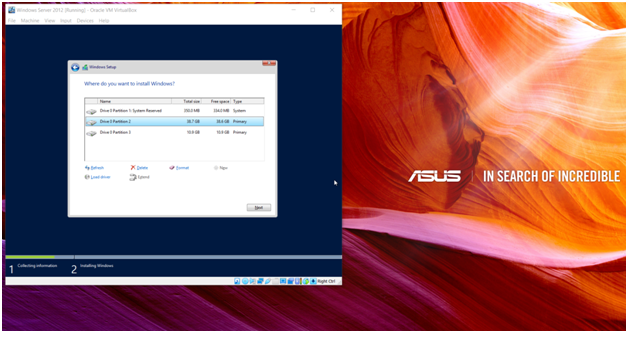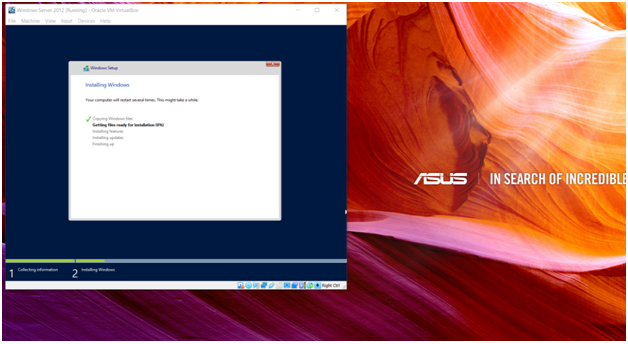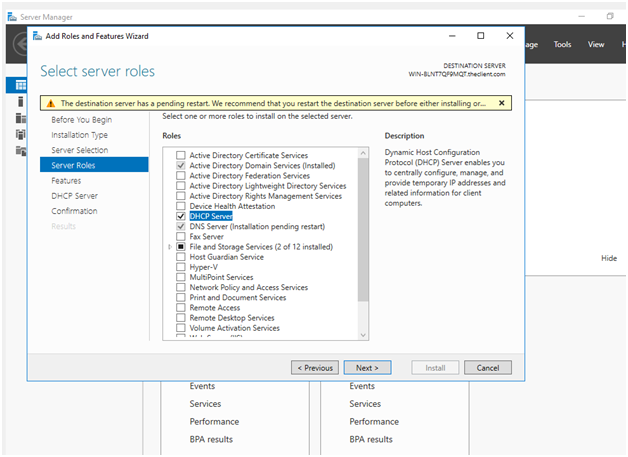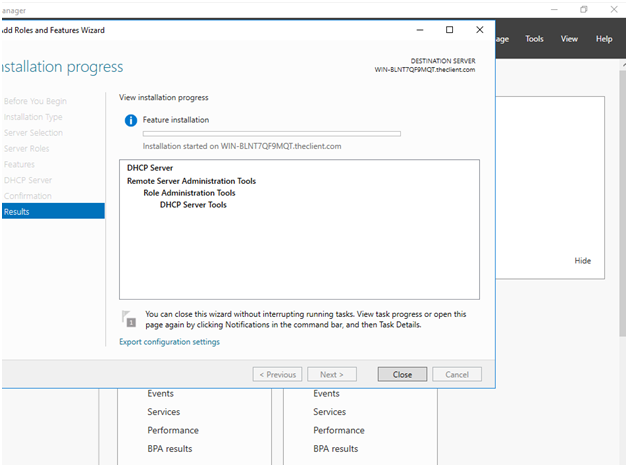
Inquiry
Task: In this system administration assignment, you are required to assess client needs, devise solutions, execute and configure the developed solutions, troubleshoot any issues, and ultimately generate a system documentation report that aligns with client specifications and adheres to a standard industry template. Comprehensive specifications are listed below:
One. Analyze client needs based on the provided scenario, identify and suggest the necessary servers and server roles (services), and provide the relevant settings for the scenario.
Two. Execute the setups with either a virtualized or physically installed server operating system to achieve the scenario. Students may use Windows Server 2012 or a later version, or a suitable Linux server. Your contribution must include screenshots of every significant stage.
Three. Compile a comprehensive system documentation report. This report will constitute a crucial component of backup and disaster recovery documentation. Therefore, it is essential to take into account human usability elements and provide setups with descriptions of each significant step, together with relevant screenshots, to effectively assist the intended consumers of the text. The marking guide contains essential components of the documentation; however, you may include other sections if considered beneficial. It is essential to elucidate the management of network change documentation and its role in facilitating the troubleshooting process by maintaining a record of prevalent problems.
Situation
You serve as the system administrator for the municipal council of Sydney, which is relocating to a new facility. The local council employs 100 full-time staff and up to an additional 50 part-time or contract workers. Every full-time employee will own an assigned workstation; the majority will also have a laptop. The part-time or contract employees own either personal or company-provided computers. Several more workstations will be available. There are four departments: Information Technology, Human Resources, Customer Service, and Finance. All entities (e.g., users, computers, etc.) associated with these departments must be established under their designated Organizational Unit (OU) for their specific department. The client necessitates the following LAN services:
Workstations, laptops, and servers
The municipal council has expanded rapidly. At the outset, when there were just a handful of pals, they used various web platforms (e.g., Google Docs, GitHub, Dropbox). However, when they transition to the new facility, they have opted to use their own infrastructure. The majority of workers operate in a dispersed manner, using their own computers and directly sharing resources with colleagues; yet, many centralized services are necessary. They have specifically highlighted the need for the following. The chosen names are included.
1) A Windows web server, designated Sydney, to host a basic corporate website. The website is designed using HTML, CSS, JavaScript, and PHP by a full-time employee, with support from a contractor.
A backup server, designated BackSydney, is used to hold a backup of the web and other servers inside the network.
A DHCP server, designated as DHCPSydney, will provide dynamic IP addresses to workstations and laptops, while assigning static IP addresses to other servers depending on their MAC addresses. Access is restricted to essential full-time personnel. 4) Centralized user authentication
5) All machines must automatically get IP addresses from a server.
6) Hosting their own website on their own server
The corporation intends to keep all files on a dedicated file server, granting access only to people with the requisite permissions, therefore restricting access for unauthorized users. Assume which people or groups will have access to these files and articulate your assumption explicitly.
8) A table detailing servers, including MAC addresses, assigned IP addresses, and client IP address ranges.
9) Specifications for the installation and setup of all servers.
10) Elucidate the rationale for your backup architecture, including your suggested backup frequency.
11) Specifications of a password policy and its execution. The policy must be suitable for the organization and specify the precise implementation inside the system.
Preface:
The system administration assignment pertains to the design, installation, and configuration of network servers. The network serves as the primary communication conduit for the company, enabling it to interact with its customers. The organization's internal network facilitates connectivity among various devices for the sharing of essential resources. A client-server network is necessary for this purpose. The devices connect to the server system, and if the server is set using DHCP, there is no need to provide an IP address to the client device. The devices are automatically acquiring an IP address from the server. The case study indicates that the firm requires many services for the LAN and necessitates a website to be hosted on its server.
One. Organizational Context:
This component of the study pertains to the organizational context necessitating the development of its architecture. As a system administrator for a rural municipality in Sydney, I am overseeing the transition to a new facility. The local council comprises one hundred full-time and permanent staff. Additionally, 50 additional individuals are engaged in part-time or contractual employment. All full-time employees should own a laptop and a designated workspace. Contractual and part-time employees are required to retain company-issued computers. Several other workstations will also be available. There will be four distinct departments: Customer Service, Human Resources, Information Technology, and Finance. Numerous items (computer equipment, users, etc.) that must be constructed according to their particular organizational units belong to all these divisions. Clients need LAN services, including servers, laptops, and workstations.
A municipal council is maturing progressively. A limited number of pals used internet platforms such as GitHub and Google Docs. Nevertheless, they want to proceed with the existing construction and make judgments about the implementation of their infrastructure. The majority of workers engage in their tasks in a dispersed manner and directly exchange resources with peers. Consequently, numerous centralized services are necessary.
i. Evaluation of the client's specifications:
To construct this infrastructure according to the organization, some organizational criteria are identified. The following part of the paper delineates these precise needs.
i. Utilize a Windows web server, specifically in Sydney, for the straightforward hosting of the business website. It may be constructed with many programming languages such as JavaScript, PHP, CSS, and HTML. Full-time employees collaborate with a contractor for support.
ii. The DHCP server, designated as DHCPSydney, dynamically assigns IP addresses to laptops and workstations, as well as configuring IP addresses for other services.
iii. Backup server, designated BackSydney, for the storage of web and server backups over the network.
iv. Necessitate a centralized user authentication system
v. Necessitate website hosting via the use of a personal server
vi. All computer systems must automatically get an IP address (Internet Protocol address) from their respective servers.
vii. An business requires the restoration of all files from a segmented file server. Only users are permitted access to the file server.
viii. Table of servers with MAC addresses, client IP address ranges, and allocated Internet Protocol addresses.
ix. Optimize server settings.
x. Details of the password policy with appropriate implementation.
xi. Identification and objectives of the server requirements:
This portion of the study pertains to the objective of a high-performance service system. It may provide the provision of various resources, data, and services to a distant computer referred to as a "Client" via many types of networks, including local area networks (LAN) and wide area networks (WAN) [1] [4]. Servers may function across diverse computer networks, provided that sufficient hardware is accessible to meet their requirements.
The server's main function is to access, store, and transfer data and directories from various computer systems over the network. Small-scale enterprises often use a local network to link many computer systems. The primary function of the server is to configure all its components in response to requests from client computers via network connections. This feature seems to be an element of a computer system used by several applications. The client device should be permitted to input all information and access other resources; the server may perform certain functions, such as processing requests and responses, to facilitate user identification.
Function of the server and associated technologies:
a. Dynamic Host Configuration Protocol server
b. ADDS Server
c. Backup server
d. Windows Web Server
three. Suggested configuration:
Dynamic Host Configuration Protocol Server:
DHCP, or Dynamic Host Configuration Protocol, is capable of assigning an IP address and other network characteristics. This network management protocol may be used to automate configuration processes inside an IP network. DHCP is an enhanced iteration of the BOOTP protocol.
According to the case study, a DHCP server named DHCPSydney is used to dynamically assign IP addresses to laptops and workstations [3]. Additionally, it may assign IP addresses to an alternative server. Access to this server is restricted to full-time staff only.
Auxiliary Server:
The backup server may enable the backup of applications, data, databases, or files on the remote server. This may provide retrieval storage and backup storage [6]. In the case study scenario, a backup server named BackupSydney is used to restore a backup of web servers on the network.
Windows web server
The Windows web server facilitates the seamless hosting of an organization's website. A solitary full-time person may create a firm website using CSS, PHP, HTML, and JavaScript. It may be referred to as Sydney [5].
The web server role in Windows Server 2016 provides a safe, controllable, and efficient platform for hosting services, applications, and websites.
Two. Execute Windows Server Configuration inside the appropriate environment:

Figure 1: Installation of Windows Server 2012 R2
Source: Created by the learner
Figure 1 illustrates the installation startup procedure of Windows Server 2012 R2.

Figure 2: Selection of Operating System for Windows Server 2012 R2 Installation
(Source: Created by the student)
Figure 2 illustrates the selection of the Operating System for the setup and installation of Windows Server 2012 R2 [2].

Figure 3: Selection of Installation Type for Windows Server 2012 R2
Source: Created by the learner
Illustration
3 displays the choices of installation type during the setup and installation of Windows Server 2012 R2 [2].

Figure 4: Ongoing Installation Process of Windows Server 2012R2
(Source: Created by the learner)

Figure 5: Ongoing installation procedure of Windows Server 2012 R2
Source: Created by the learner
Figure 5 illustrates the ongoing installation of Windows Server 2012 R2 [2].

Figure 6: Local Server Configuration
Source: Created by the learner
Figure 6 illustrates the local server settings on the Server Manager welcome screen. This page displays the local server and all server options. Five functions are shown in the local server setup.

Figure 7: Role and Features Addition Wizard in Server Manager
Source: Created by the learner
Figure 7 illustrates the Role and Features Addition page on the Server Manager dashboard. This wizard facilitates the installation of roles, services, and features according to the specifications of the computer equipment.

Figure 8: Installation Type of View Selection
(Source: Created by the learner)
Figure 8 illustrates the option of installation type inside the Server Manager dashboard. The role-based or feature-based installation approach is chosen in this instance.

Figure 9: Destination Server Selection Page View
(Source: Created by the student)
Figure 9 illustrates the target server selection screen inside Server Manager [2].

Figure No. 10: Display Add Features Option
(Source: Created by the learner)
Figure 10 illustrates the Add Features option inside the Add Roles and Features Wizard.

Figure 11: Server Role Selection
Source: Created by the learner
This figure indicates that the DHCP Server is designated as the role on the server.

Figure 12: Installation Progress of View Feature
(Source: Created by the student)

Figure 13: Successful Feature Installation
(Source: Created by the student)
Overview of the configuration:
To configure the server, one must first establish a virtual environment by installing Virtual Machine software, followed by the installation of Windows Server 2012 R2 inside the virtual machine. Subsequently, it is necessary to setup Active Directory Domain Services (ADDS), Dynamic Host Configuration Protocol (DHCP), Domain Name System (DNS), and the web server configuration, as detailed in the preceding part of the report.
Three. Documentation report for the system:
This aspect of the report pertains to the system documentation report, which is a crucial component of the system and the documentation process. The system's configuration will be shown here. In the organizational server, one Active Directory Domain Services (ADDS) role is implemented, establishing a domain forest corresponding to the domain name. Thus, when the user intends to access the system, they may effortlessly do so by entering the specific domain name and its corresponding password. Subsequently, the DHCP function is implemented on the server to provide seamless connectivity for client devices to the system. The company aims to construct a LAN network to integrate various client devices into it. Subsequently, they want to host a website on the server, enabling client devices to contact the server and get the website on their interface.
Four. System configuration:
The setup used in this assignment comprises the Windows operating system, Oracle Virtual Machine, and Windows Server 2012 R2 with a graphical user interface.
Summary:
Upon thorough examination of the whole data, it is determined that Windows Server 2012 is the prevailing version of the operating system for server administration. The client's needs are assessed. In addition, necessary servers are identified and their functions are presented. This assignment delineates the setup method. The settings of the Windows server provide website hosting, accessible to the customer via their device. This evaluation report is produced efficiently.
Reference:
[1]. Peiró, L.T., Polverini, D., Ardente, F. and Mathieux, F., 2020. Advances towards circular economy policies in the EU: The new Ecodesign regulation of enterprise servers. Resources, Conservation and Recycling, 154, p.104426.
[2]. Tulloch, M., 2012. Installing and Configuring Windows Server 2012. Microsoft Press.
[3]. Dinu, D.D. and Togan, M., 2014, May. DHCP server authentication using digital certificates.In2014 10th International Conference on Communications (COMM) (pp. 1-6).IEEE.
[4]. Alsaadi, R.R. and Abdul-Zahra, D.S., SECURITY DHCP SERVER ON LAN NETWORK. System administration assignmentTurkish Journal of Physiotherapy and Rehabilitation, 32, p.3.
[5]. Mirdita, M., Steinegger, M. and Söding, J., 2019. MMseqs2 desktop and local web server app for fast, interactive sequence searches. Bioinformatics, 35(16), pp.2856-2858.
[6]. Chakravarthy, S.R. and Kulshrestha, R., 2020. A queueing model with server breakdowns, repairs, vacations, and backup server.Operations Research Perspectives, 7, p.100131.
